

We woke up relatively early for a Sunday, got dressed and walked to a little restaurant around the corner of our street to have breakfast. We had planned to repeat, more or less, the walk we had made Saturday a week ago, which was fantastic. We had seen many butterflies, and I was hoping to capture different species this time with my digital camera.
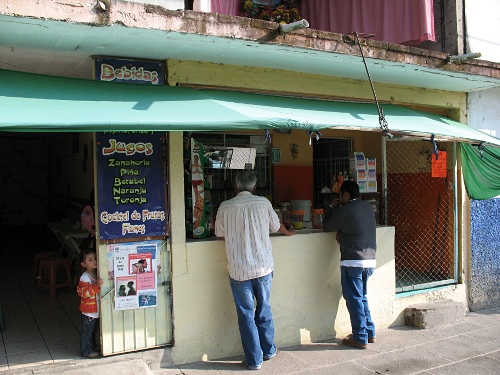
After breakfast we followed, like last week, Juan de Dios Peza in the direction west-southwest. We stopped at a shop selling fruit, vegetables, and bottled refreshments to buy some fruit and two bottles of water. While Esme was selecting some fruit I took photos of a nice stack of small bananas on display for sale.
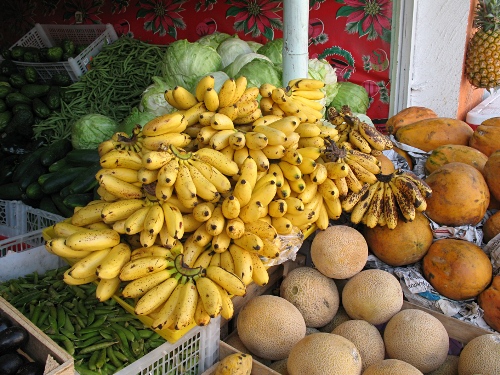
After I had taken some photos of the plátanos dominico, as I know those small bananas, Alice came checking out what I was doing and then discovered a crate with pea pods. She started to pick them up and stack them next to the small bananas. I couldn't resist to take a few photos of her "working" in the shop.
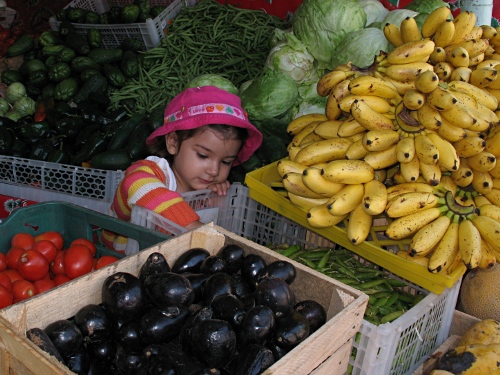
In the above photo you can also see a wooden crate with small, very dark colored, avocados in the foreground. I really love those avocados, which can be eaten with skin like a little snack. To me the taste reminds me somewhat of anise, and is overall absolutely delicious.
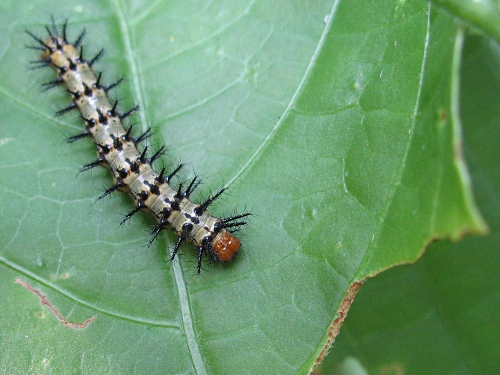
After about half an hour of walking we reached the dirt road we had followed eight days ago and soon walked in the shadows of large trees. Each time the road got a little muddy we saw mostly 88-butterflies attracted to it. Some parts of the vegetation to the right had grayish white colored caterpillars with black bands and orange heads, which I guessed to be the larvae of the Crimson-patch Checkerspot (Chlosyne j. janais).

After some more walking the trees got taller and got trunks painted white. Then Esme spotted an Orange Cracker (Hamadryas fornax fornacalia) resting on a tree trunk. I moved very slowly as close as possible and took a few pictures with flash on because there was quite some shadow. But each time the flash fired, the butterfly moved its wings up, fast enough to make a large part of the forewings appear blurred in each of the photos. So I turned off the flash and tried to make a photo without flash. And this time, as expected, the butterfly didn't move its wings.
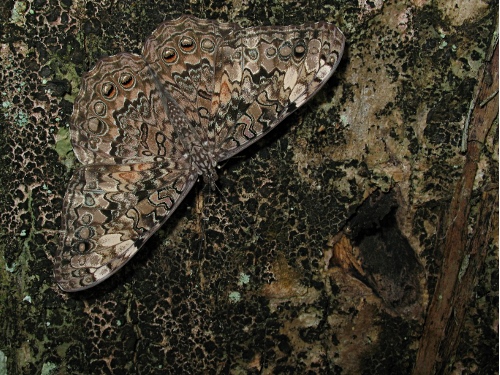
Several minutes later I spotted a Gray Cracker (Hamadryas februa ferentina) resting on a tree. Since there was much more shadow I had to use the flash of the camera. Luckily, this Cracker wasn't bothered by the flash and I took two photos. Then I decided to lower the energy output of the flash to get more natural colors. The above photo is the last one in the series I took, also available as a larger version.
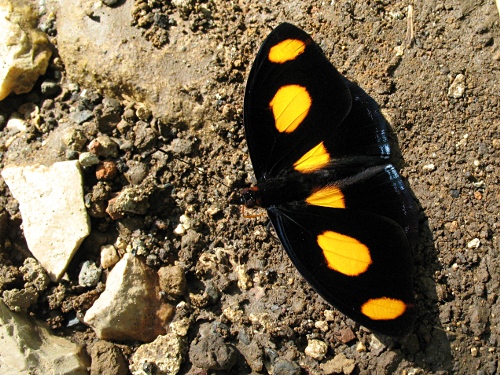
After some more walking we came upon a part of the dirt road that was more open. Esme spotted a Blue-frosted Banner (Catonephele numilia esite), and since it had bright orange spots on the wings it was without a doubt a male.
More than two years ago, during a walk near San Marcos, a town close to Coatepec, I had seen my first Blue-frosted Banner, also a male. And back then, like today, it was very hard to get close to this beautiful butterfly. Moreover, the harsh direct sunlight made it very hard to get a good picture.
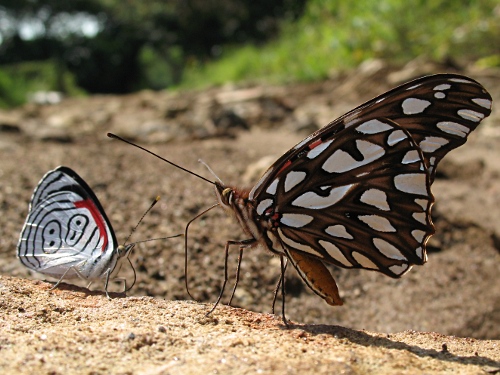
After some more walking the area became more open. Esme walked ahead with Alice and nursed her in some shadow. I spotted a Mexican Silverspot (Dione moneta poeyii) and tried to get closer to take photos of it. It flew up a few times and on one occassion landed somewhat on top of another butterfly, an Anna's Eighty-eight.
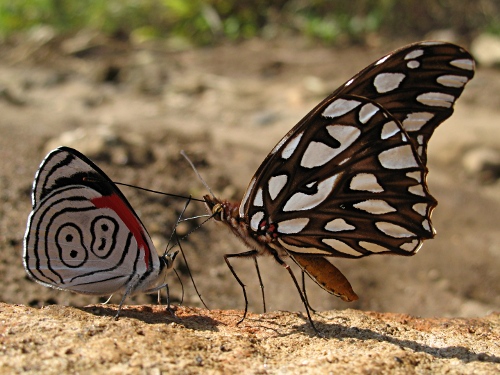
The Mexican Silverspot moved a little away from the 88 and I was able to get quite close and take a few photos of the two butterflies. At times it looked like the two insects had a chat on the latest events near the town of Coatepec.
After a few more photos I gave up because the sun was burning hot. I walked down the road towards Esme and some shadow when I noticed another heliconian: a Zebra Longwing (Heliconius charithonia vazquezae) fluttering around some flowers, and now and then landing on one in order to take some nectar. Maybe because the butterfly was quite occupied or maybe because I had learned to move more slowly, but this time I managed to get close to a member of this species without much of an effort and could take two photos.